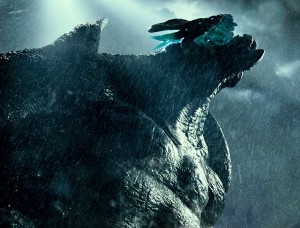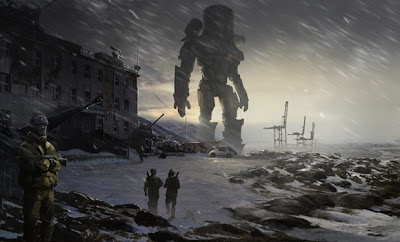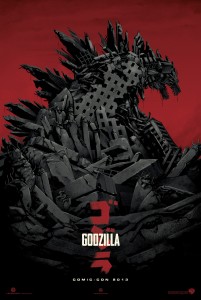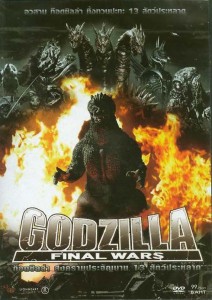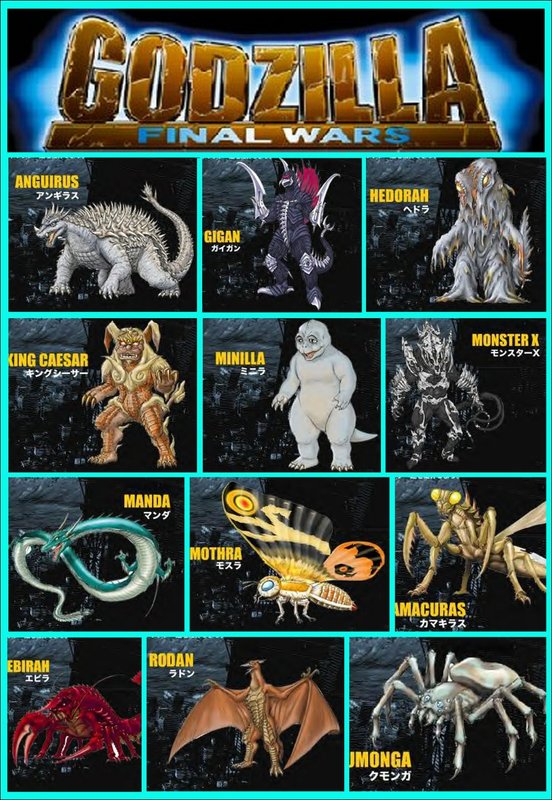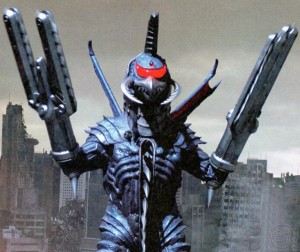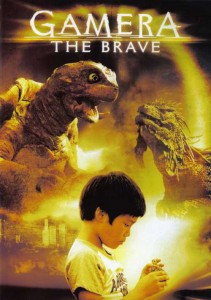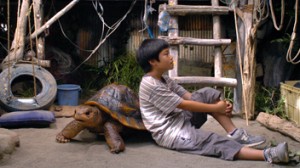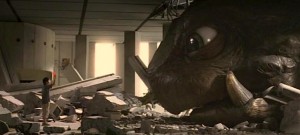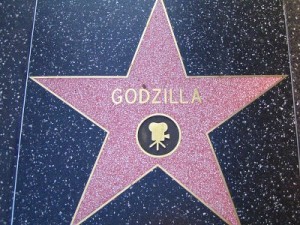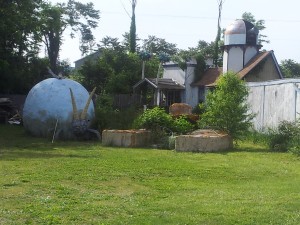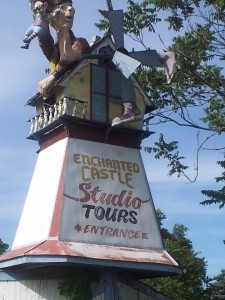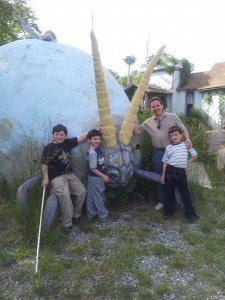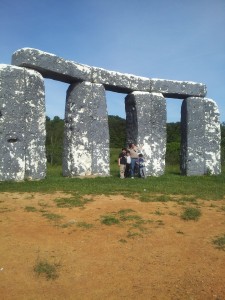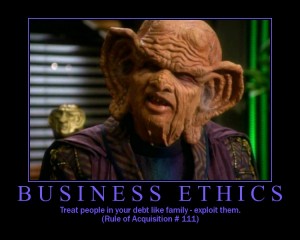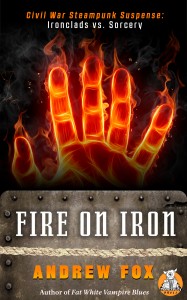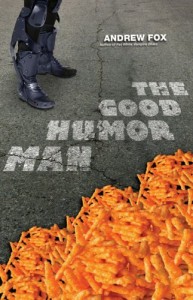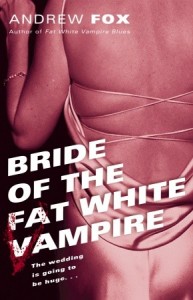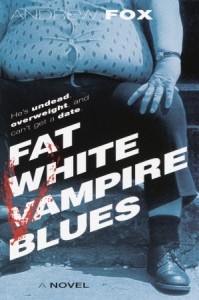I took my three boys to see director Guillermo del Toro’s giant monsters vs. giant robots thriller, Pacific Rim, earlier this week. We all left our neighborhood theater very impressed. I was convinced I’d just seen the most beautifully filmed giant monster sci-fi extravaganza in the history of giant monster sci-fi extravaganzas. In fact, despite an urgent, and I mean urgent need to visit the men’s room which arose about half way through the film’s two and a quarter hours running time, I glued myself to my seat, not wanting to miss even a moment of the spectacle.
This is worth noting, because I’m an old-school giant monster/dinosaur sort of guy; you couldn’t trade me two dozen Jurassic Parks and their CGI ilk for a single Ray Harryhausen-created stop-motion The Valley of Gwangi. I tend to think science fiction and fantasy films which rely upon large amounts of CGI effects (as nearly all do) tend to look monotonously alike and provide very little in the way of visceral, visual thrills. But the CGI artisans of Industrial Light and Magic managed to really wow me with their work on Pacific Rim. The early scenes off the coast of Alaska were particularly striking, as were scenes set in Hong Kong’s Bone Town (itself an effective evocation of Blade Runner’s dystopian Los Angeles) and the climactic scenes of the giant mecha Gipsy Danger’s descent into the Breach, leading into the watery alien dimension from which the giant sea monsters have been emerging.
In an interview from 2012, del Toro stated that he instructed his designers to avoid direct visual quotes from the classic Japanese kaiju and mecha films and TV shows of decades past, even though he meant Pacific Rim to be a loving homage to those childhood delights. Instead, he wanted to aim for “operatic grandeur” and “epic beauty,” and he listed a Francisco de Goya painting, El coloso (The Colossus), as a primary inspiration for the visual take he wished to apply to Travis Beacham’s screenplay. I think del Toro hit his mark. I felt much the same sense of awe and majesty watching the film’s giant robots as I do when looking at Goya’s painting or when reading J. G. Ballard’s classic short story “The Drowned Giant.”
But what made Pacific Rim such a rewarding movie experience for me was that it backed up its evocative, breathtaking CGI effects with a decent script and a set of characters worth caring about. The makers of too many SF and fantasy blockbusters and would-be blockbusters of the post Jurassic Park era have thrown the great bulk of their efforts and budgets into the best CGI money can buy, assuming that “wow-‘em” special effects are all an audience for this type of film require. All too often, story and characters are treated as afterthoughts, appendages to the array of special effects. This may have worked (in terms of ticket sales, if not artistic value) back when CGI effects remained a novelty. But just as the same audiences who were terrified by the approaching locomotive in the 1895 film short The Arrival of a Train at La Ciotat Station required an actual story to be entertained a few years later, in 1902, when they went to see A Trip to the Moon, so do we SF and fantasy buffs require more than a really kewwwl spaceship, alien, dragon, or giant monster on screen in order to have an engaging film-going experience.
Central to the film’s plot is the conceit that single pilots lack the brainpower necessary to guide the kaiju-killing giant robots, or Jaegers; in order to prevent mental burnout and brain damage, a minimum of two pilots are necessary, and those two pilots must “drift” together, or establish a neural linkage, in order to make one of the gigantic mechas do its monster-killing thing. This conceit sets up both the protagonist’s tragic backstory (the death of his brother while the two men were linked, fighting a kaiju) and the film’s central love story, and it provides the hinge upon which the film’s climax swings (a supporting character uses the “drift” tech to link into the kaiju’s hive-mind and discover a way inside the enemy aliens’ dimension). This is clever and effective; as a creator of SF and fantasy plots, myself, I can appreciate the storytelling economy which results when a single McGuffin is used for multiple plot purposes.
The set design is especially noteworthy. I don’t believe set design has played this major a role in elevating the quality of a SF film since Blade Runner and the first two Alien movies. Nearly all the film’s settings are in close proximity to the Pacific Ocean, so rust is a major element of the movie’s aesthetic. Everything is rusty; if some of the cast members would’ve sat still for more than thirty seconds, I’m sure they would’ve sprouted a patina of rust, too. The scenes depicting the building of the great barrier wall, stretching from Vancouver down to San Diego, have great visual impact, as do the scenes set in the Bonetown neighborhood of Hong Kong, locus for the processing and sales of bits of dead kaiju, which all take place in the shadows of a towering skeleton of one of the dead creatures.
Although the performance of the lead actor, Charlie Hunnam, is merely passable, several of the main and supporting performances rise above the merely pedestrian. Idris Elba has great screen magnetism as the doomed leader of the soon-to-be decommissioned Jaeger force, and Rinko Kikuchi is very appealing as the tough yet vulnerable heroine and love interest, equally adept at kinetic fight scenes and more intimate, emotional tableaus. The film benefits from a trio of comic relief characters who are not complete embarrassments (as such figures often are in SF and fantasy pictures) and who are actually engaging in their own right: Ron Perlman as the leader of the kaiju part selling ring, and Newton Geiszler and Hermann Gottlieb as a pair of socially maladroit scientists who study the kaiju and try to predict their attacks for the Jaeger force.
The movie supplies some wonderful “Easter egg” moments for long-time fans of the giant monsters and mecha genres. When fighting one of the kaiju, pilot Raleigh Becket activates Gipsy Danger‘s “rocket punch” feature, which supercharges the robot’s punch and nearly takes the giant sea beast’s head off; that was a wonderful moment for me, turning me back into a kid watching Johnny Socko and his Giant Robot in Voyage into Space. And at the close of the credits, when I saw that the movie was dedicated to the memories of Ishiro Honda and Ray Harryhausen (the latter of whom we lost just earlier this year), I stood up and applauded.
All that said, the movie is not without its flaws. The screenplay, in particular, suffers from several unforced errors, holes in logic which aren’t necessary for the plot to advance. About fifteen minutes into the film, we learn that the Jaeger program is being abandoned in favor of the building of gigantic walls separating coastal metropolises from the Pacific Ocean, from whence all of the giant monsters have emerged. As costly as building a Jaeger robot must be, surely building a three-hundred-foot-high steel and concrete wall along thousands of miles of coastline is infinitely more costly. Also, the entire history of twentieth century warfare demonstrates the superiority of a mobile defense (such as the Jaegers) over a static defense (such as the barrier wall, or its predecessor, the French Maginot Line). Not only that, but the history of the kaiju attacks demonstrates a steady progression in the size and power of the attacking monsters, so that monsters to come are certain to be able to breach the wall (which ends up happening). In battles between the kaiju and the Jaegers, about half the giant robots end up destroyed by the monsters, but the other half succeed in killing the creatures. The Jaeger program is terminated and the robots decommissioned because of a lack of skilled pilots, which has led to the diminishment of the Jaeger fleet. But surely an intensive program to identify and train promising pilots is much more cost-effective than building a barrier wall which is assured to eventually fail.
An even worse unforced error in the script is the chatter amongst a couple of the scientist characters that the present invasion of kaiju is a follow-up to a much earlier invasion from the alien dimension, the invasion which infested our planet with dinosaurs, who were actually advance forces from the alien world. The scientists state that the dinosaur invasion failed because environmental conditions – carbon density in the air, the acidity of the oceans, and global temperatures – weren’t optimal for the invaders eons ago; but since then, mankind has unknowingly “terraformed” Earth into a status much more congenial to the aliens (through our carbon pollution, acid rain, and subsequent global warming). This attempt on the part of the screenwriters to inject some contemporary PC “relevance” into the script is stupid and just plain wrong. First of all, both the carbon content of the atmosphere and global temperatures were MUCH higher in the era of the dinosaurs than now. Secondly, oceans covered a far larger percentage of the Earth’s surface during the Jurassic and Cretaceous Eras than today; the aliens are all water-based creatures, so they should’ve been much happier with Earth eighty million years ago than now. Thirdly, the dinosaurs were Earth’s dominant life forms for over a hundred million years. Yet this is considered an unsuccessful invasion? I call this script stupidity an unforced error because not including it in the dialogue would not have altered the movie’s logic one bit – discarding it would have improved the internal logic of the film’s backstory, in fact.
Another, equally glaring unforced error in the script is Jaeger Force commander Stacker Pentacost’s statement to hero Raleigh Becket that he has a plan to stop the kaiju invasion once and for all; this is how he tempts Raleigh out of his five-year retirement from piloting Jaegers, following the death of Raleigh’s brother. Pentacost’s plan? To have a Jaeger enter the top of the Breach in the mid-Pacific Ocean and drop a nuclear bomb down the throat of the narrow gateway between universes and collapse it. Glaring script problem/unforced error? Raleigh tells his new partner, Mako, that the Jaeger force has tried that exact same plan before and it failed. So why do any of them expect it to work a second time? And why risk the last Jaegers remaining on the planet to carry out a plan which has already been a botch? Later in the movie, Newton Geiszler, the scientist who successfully drifted with the remnants of a kaiju brain, uses his new expertise to discover a way around what made the nuke-dropping plan fail the first time, just in time to prevent the pilots of Gipsy Danger from making the same mistake all over again. This plot twist would have still worked had there not been any earlier attempt to drop a nuke into the Breach. Getting rid of this earlier attempt would mean Pentacost, Raleigh, Mako, and the rest of the Jaeger Force wouldn’t look like clueless doofuses for risking everything on a plan that had already failed due to unknown causes.
Although I list the film’s design team as one of its major strengths, I have to admit that it fell down for me in one key area – creature design. Too many of the movie’s numerous kaiju look and act too similarly to one another; with a few exceptions, it as though we are seeing the same creature attack again and again (the only one which stands out in my head is the one with wings). None of the creatures is given any personality whatsoever, beyond a “Hulk smash!” sort of destructive mania. Also (but this is a criticism I could hurl at most CGI creature movies), the monsters move about so quickly, in such a confusing whirl of motion, that we viewers never get a really good look at any of them. This is in contrast with the long, lingering views of the giant robots we are treated to.
All in all, despite my mostly script-related disappointments listed above, I hugely enjoyed watching this movie, and it is one of the very few creature films of recent years that I am eager to see again (if for nothing else, just to immerse myself in the rich visual spectacle again). An interesting question to ponder is whether Pacific Rim renders the next big kaiju project from Legendary Pictures, the 2014 American remake of Godzilla, entirely superfluous. What will the new Godzilla be able to bring to the screen which hasn’t already been surpassed by Pacific Rim?
Yes, Godzilla has a rich, sixty-year history, a tremendous supporting cast of fellow kaiju, and, in some of his incarnations, at least, a comparatively complex personality (compared to your typical dinosaur, that is) – Godzilla has been a parent, an ally to fellow kaiju and giant mecha, a determined foe of invading aliens, and a sometimes friend, sometimes enemy to humanity. However, judging from interviews with Frank Darabont, screenwriter of the Godzilla reboot, it sounds as if all those unique elements of the Godzilla mythos listed above will be tossed out the window. Darabont, acting as though he has never seen any of the dozen or so films of the Heisei or Millennium Series Godzilla movies, explains that he wants to return Godzilla to his 1954 roots as a terrifying force of nature. He heaps considerable scorn on the later films of the Showa Series, wherein Godzilla mellowed somewhat and actually displayed a sense of humor.
But if Godzilla in 2014 is to be a terrifying force of nature, and that is all, what will separate him from the kaiju of Pacific Rim? What will set the reboot above the earlier film for audiences who have already viewed Pacific Rim? The 2013 film featured at least ten rampaging giant monsters. Doesn’t that trump just one? Pacific Rim succeeded on the strength of its story, its characters and character interactions, and its gorgeous design sense. The new Godzilla, with only one giant monster (I assume) and no giant robots, will need to be amazingly strong in the story and characters/performances departments to just equal, much less surpass, Pacific Rim.
Given that getting a good, solid script down on paper seems to pose a far stiffer challenge to today’s producers of movie blockbusters than nailing the special effects, I fear that Legendary Films may end up disappointing those fans of Pacific Rim who hope to be even more wowed by the reboot of Godzilla next year. I hope they will manage to pleasantly surprise me.

